When I was a kid we used to play touch football in the street. Because there wasn’t an offensive line we had to count ten seconds out loud before we could rush the quarterback. When we counted we would use Mississippis because supposedly it takes one second to say “One Mississippi”. Say it ten times and you could rush the quarterback. I was out recently looking for wildlife to photograph when I came across a number of beautiful raptors that caused me to harken back to those days. I found myself counting each of the several birds circling overhead in Mississippis as if I were a kid on the football field. One Mississippi Kite, Two Mississippi Kites, and so on.
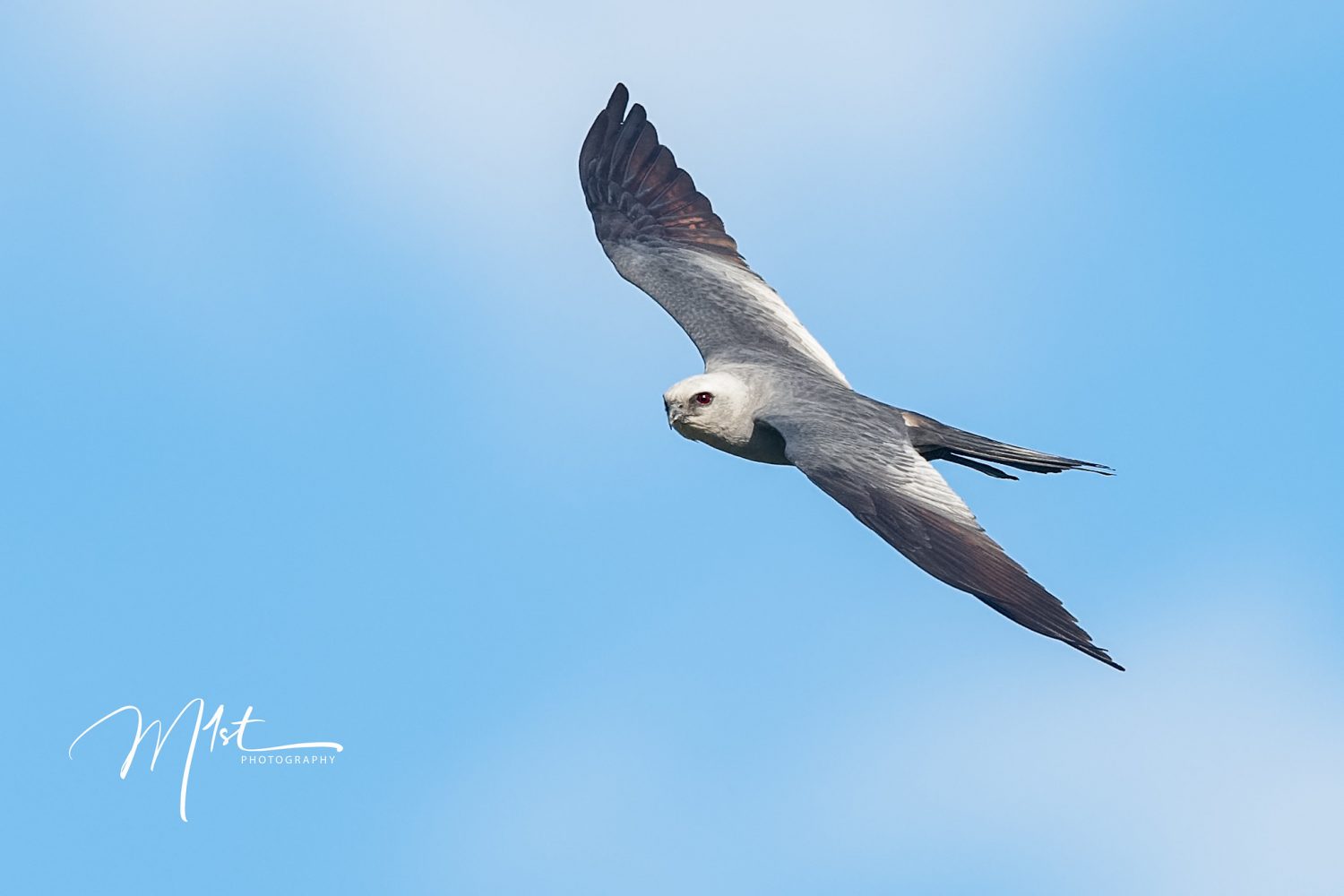
The Mississippi kite is a smaller bird of prey in the family Accipitridae. They are prevalent in west Texas throughout the spring and summer months. They provide a great opportunity to work on bird in-flight photography. Although they are a small raptor they are relatively large birds and often fly in a predictable circular pattern when hunting. They have narrow, pointed wings and are graceful in flight, often appearing to float in the air. This predictable flight pattern and floating behavior make panning and focusing much easier. It is not uncommon to see several circling in the same area at the same time providing a “Target rich environment”, for photographers looking to improve their bird in flight skills.
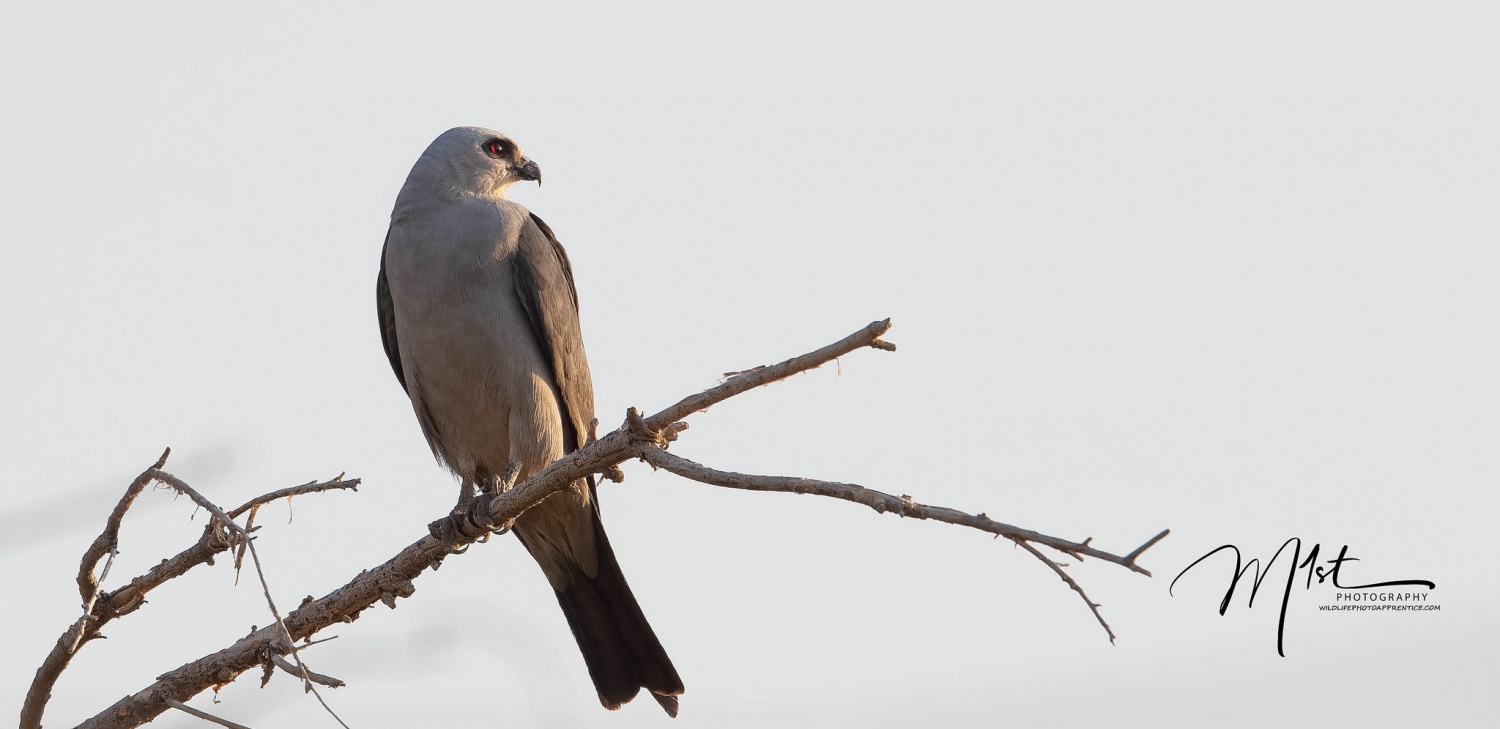
Adults are gray with darker gray on their tail feathers and outer wings and lighter gray on their heads and inner wings. Males and females look alike, but the males are slightly paler on the head and neck. They both have piercing red eyes.
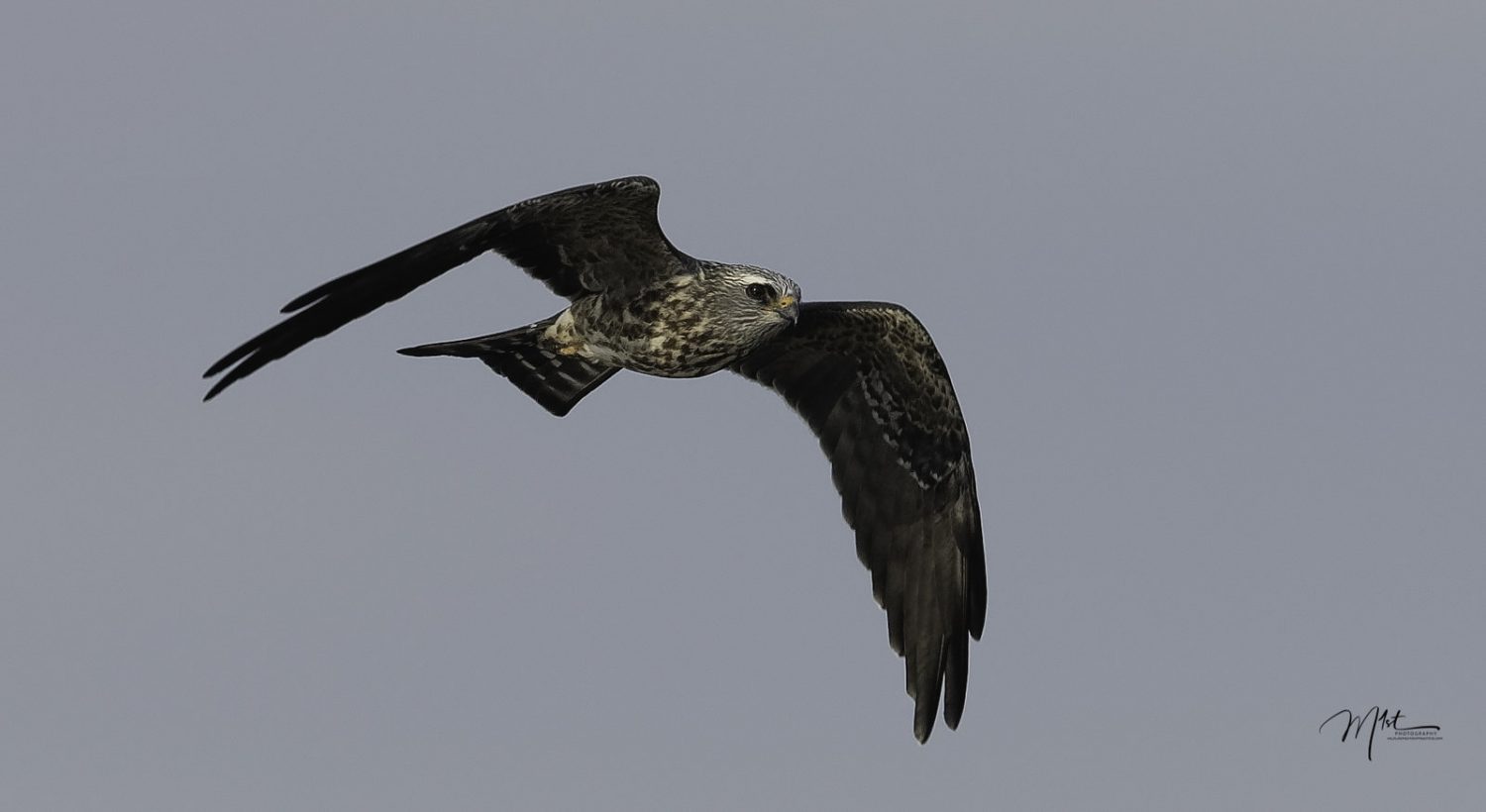
Young kites have banded tails and streaked bodies. It is 12 to 15 inches (30–37 cm) beak to tail and has a wingspan averaging 3 feet (91 cm). Weight is from 214 to 388 grams (7.6-13.7 oz). Their call is a high-pitched squeak, sounding similar to that of a squeaky toy.
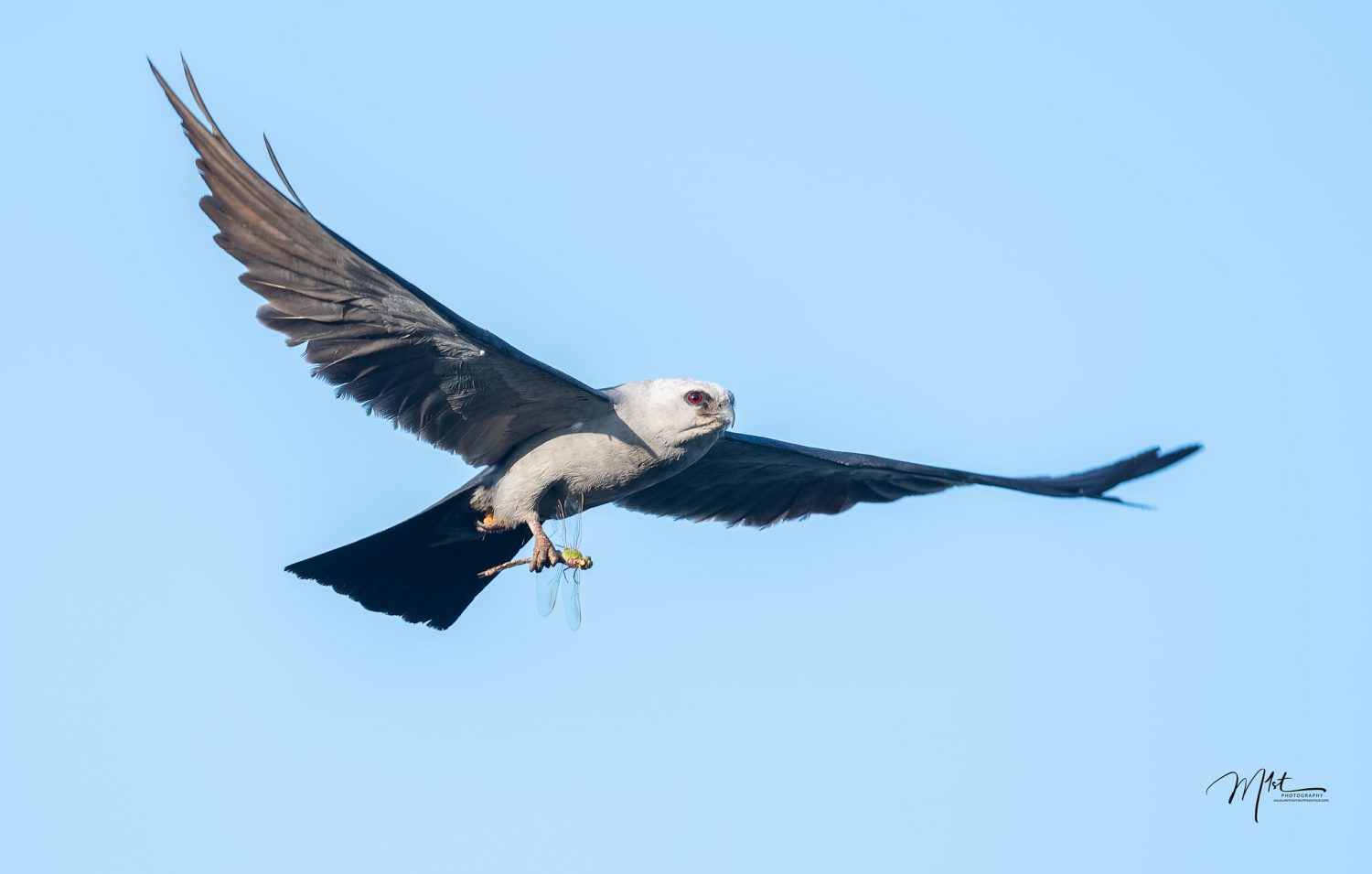
Their diet consists mostly of insects which they capture in flight. As a result, finding a pond with a healthy population of large dragonflies will often allow you to find Kites feeding on them. They fly over the pond until they spot their prey then swiftly swoop down grasping them from the air. They often eat their prey in flight. These behaviors provide for interesting wildlife photos as well.
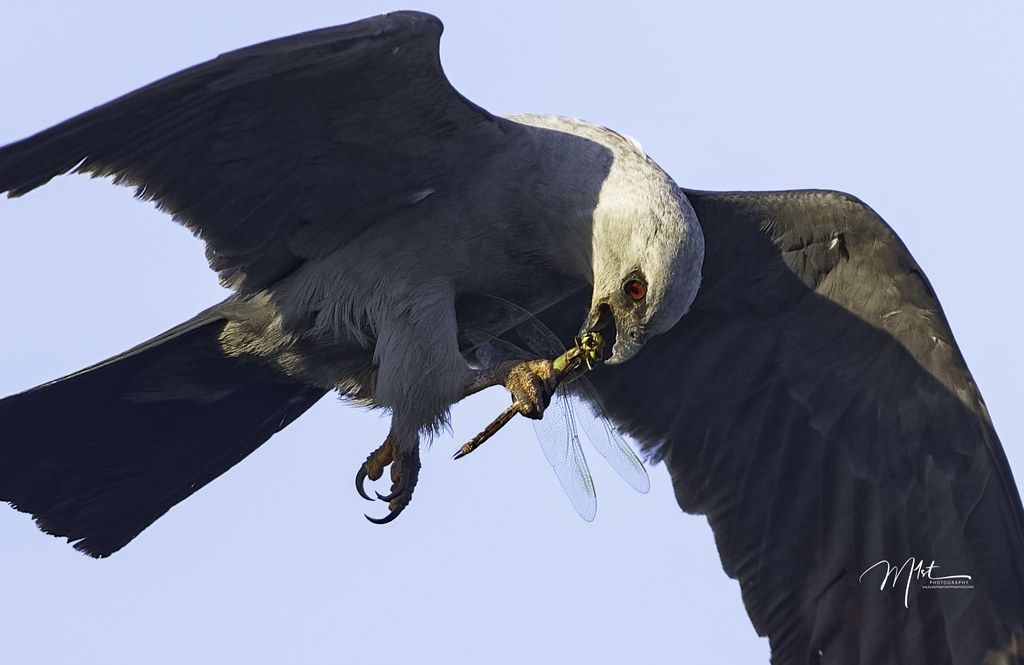
If you are trying to find Mississippi Kites, they are prevalent in the Southeast or the southern prairies of Texas and Oklahoma during the summer. They prefer areas around large wooded wetlands. They may nest in city parks or golf courses and are common in urban areas. Nestlings preen each other, arrange nesting material together, and show very little aggression toward their siblings—unusual traits for raptor chicks. At 25-30 days of age they start moving from the nest to nearby tree limbs and back, and they leap into flight several days later.
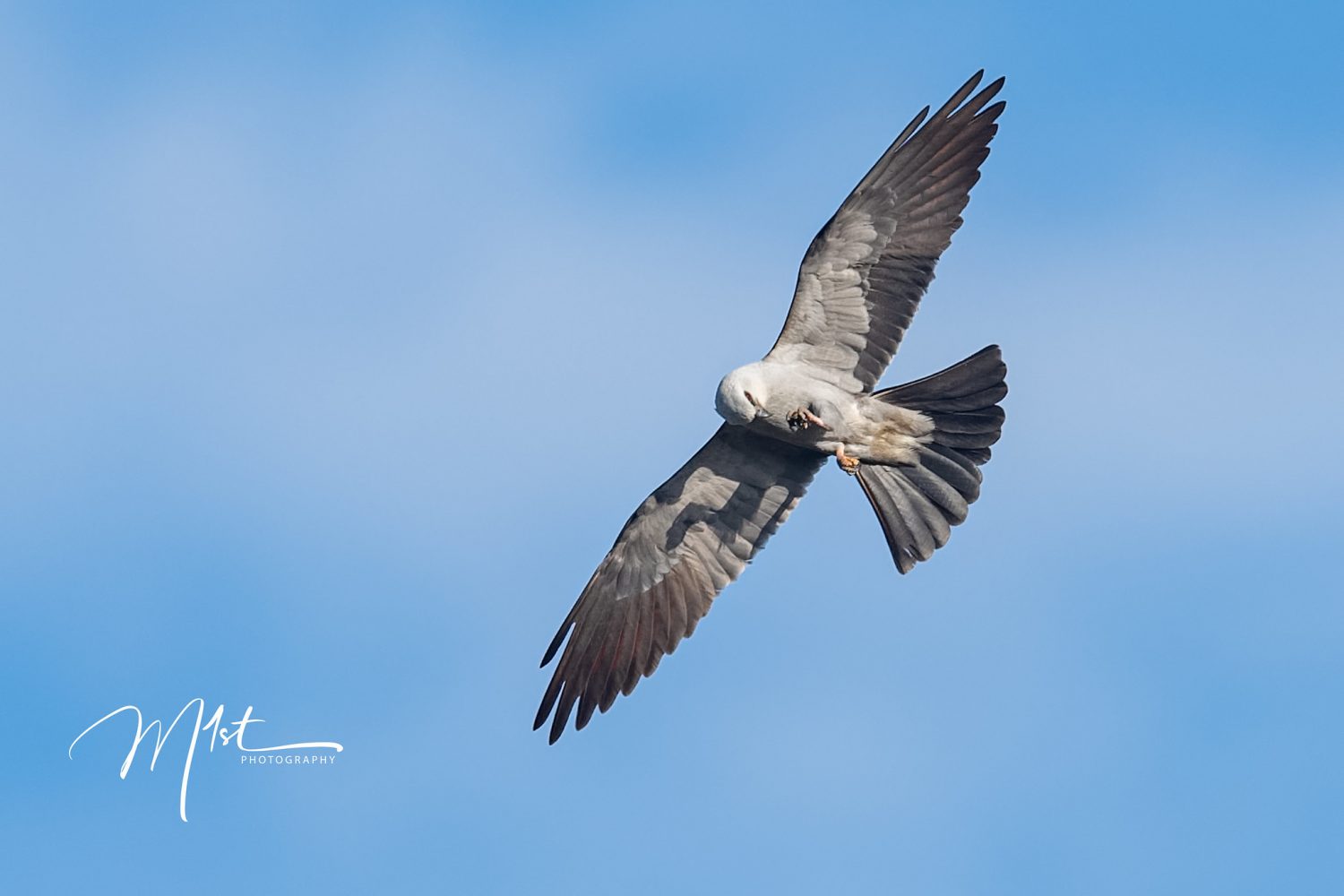
These birds can be difficult to photograph from the standpoint of exposure. They are very light gray, almost white in areas over their body and head while their wings are dark gray transitioning to almost black. By default, I always shoot in manual mode. My initial approach for any bird in flight situation is to prioritize shutter speed and adjust the shutter speed to no slower than 1/1250th of a second, and preferably 1/1600th. I set the ISO to the maximum I can tolerate to achieve these minimum shutter speeds, for my D500 that’s about ISO 1000 max. I don’t mind shooting wide open at F4 if needed, but prefer F5.6 or higher to get some increase in depth of field but only if light allows. As with every situation I try to take a few initial shots and then go to the histogram. For most birds with white or very light colors you should try not to crowd the right of the histogram in order to prevent blown highlights. From a noise standpoint, however, exposing to the right and bringing down highlights in post-processing is preferable to underexposing and bringing up shadows in a high ISO situation.
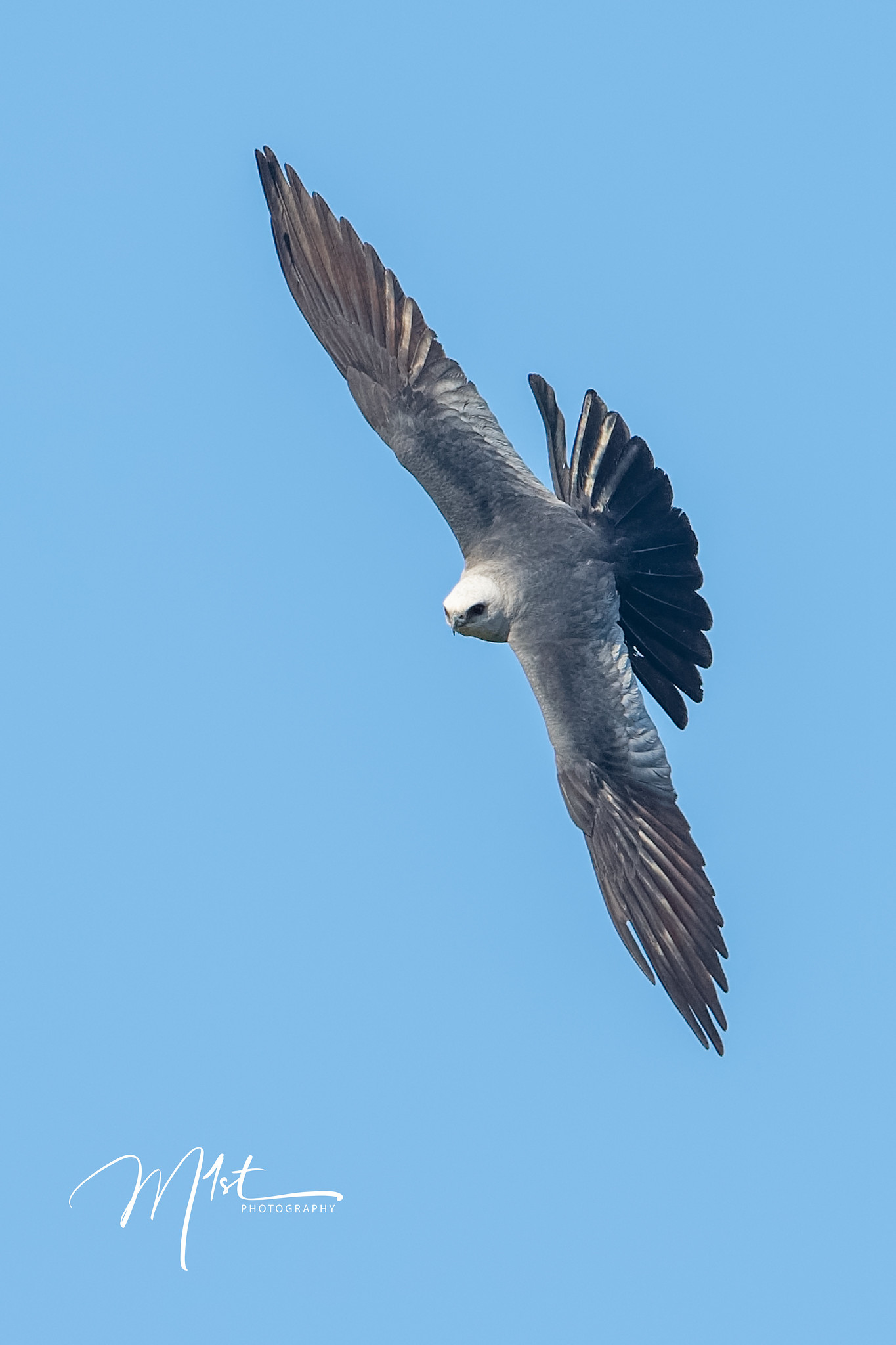
The next time you are out looking for something to shoot, look up and see if you can find a Mississippi Kite. Just don’t count too many of them in a row or you may get rushed and tackled by some little kid playing football nearby.
